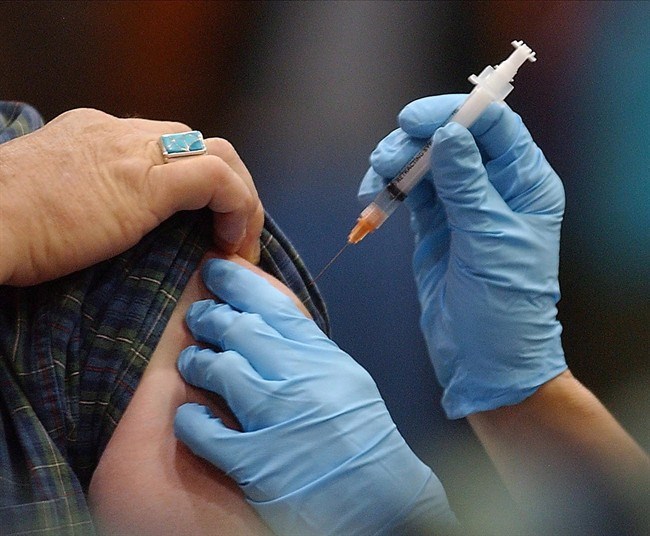The number of influenza cases has begun to rise on Vancouver Island and includes outbreaks at eight care facilities.
As of Thursday, Island Health medical health officer Dr. Paul Hasselback said, three care facilities were affected by influenza A and three by influenza B. Laboratory testing was still being done at the other locations. “We’re seeing an increase in the number of outbreaks as the days go on. … The list literally changes every half day or so,” he said.
Hasselback said it is unusual to see two flu strains circulating at one time. “It just means that more people are likely to come down with influenza in the next couple of weeks,” he said. “Two different strains, one does not provide protection from the other one.”
The A-strain, known as H3N2, was the predominant type of flu in 2016-17 and can be hard on elderly people.
Overall, this could be a busy flu season, Hasselback said.
“We certainly know that our colleagues in the southern hemisphere, Australia specifically, saw a fairly heavy year for influenza.”
Influenza A and B viruses both cause the illness we recognize as the flu with fever, headache, dry cough, fatigue, muscle aches, sore throat and a runny or stuffy nose. However, the illness caused by the influenza A virus is usually more severe.
In Greater Victoria, Glengarry Hospital, Oak Bay Lodge (3 Maple Unit only) and Sunrise Senior Living (Reminiscence Floor only) have outbreaks.
There are also outbreaks in Nanaimo at Dufferin Place, Eden Gardens, Nanaimo Regional General Hospital and Origin at Longwood, along with Trillium Lodge in Parksville.
Hasselback said health officials are able to monitor only laboratory-identified cases of the flu and can’t count each one that occurs in the community.
“It’s only a small fraction of the number of people who may have had symptoms already, but it does give us an indication of the level of intensity or the increase that has occurred over the last one to two weeks.”
Hasselback expects the flu to be around for some time, and noted that each year it appears with “a different personality.”
“I expect that we’re only just on the beginning of the upswing right now.”
To date, the flu vaccine seems to be working better here against the B-strain, Hasselback said.
“The A-strain, we’re still waiting to see how effective that’s going to be,” he said. “There’s some information suggesting we may not get as much response as we would hope for.”
Despite that, he said getting a flu shot is the best way to prevent becoming sick. Last flu season, about 231,354 doses of vaccine were administered within the Island Health area, and 260,000 doses were ordered for the current season.
The vaccine takes 10 to 14 days to start working.
Hasselback said people are not typically told to avoid visiting facilities with flu outbreaks.
“Interacting with loved ones is really important, both for the resident and the family members,” he said.
He said people who will be visiting would ideally have had a flu shot, and if not, they are asked to wear a mask, available at the facility. “When an outbreak is on, it’s also really important to not come if you’re ill, at any point in time. When you do come, wash your hands — there are stations with alcohol washes at the door.
“Go and visit the one person or maybe the couple that you know that are in there and then leave, don’t socialize.”



